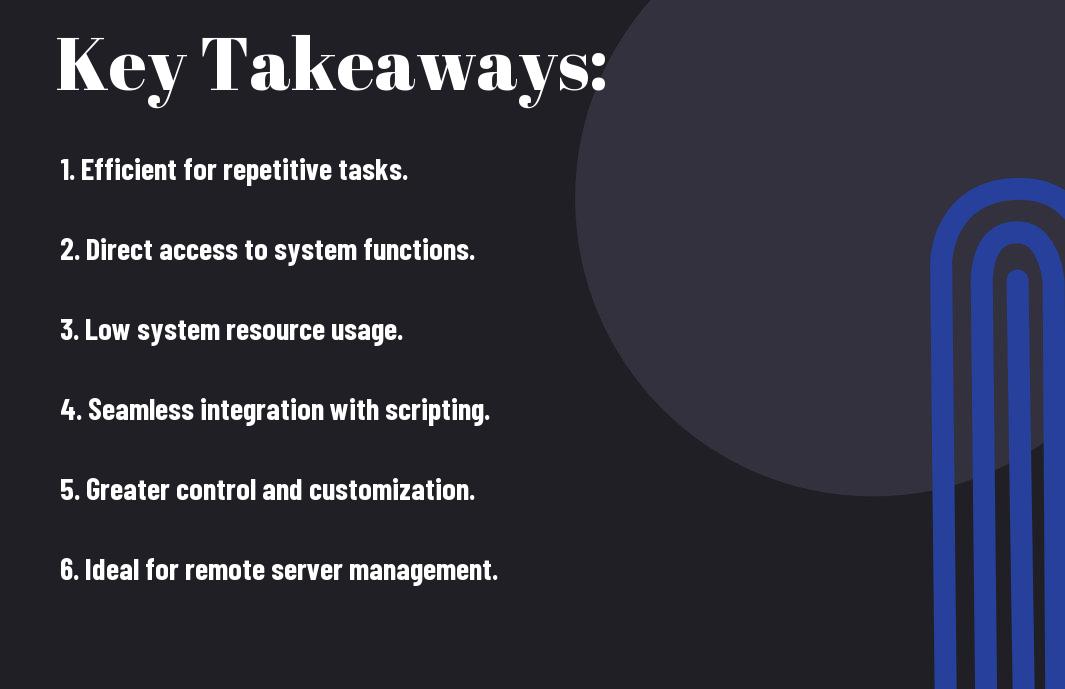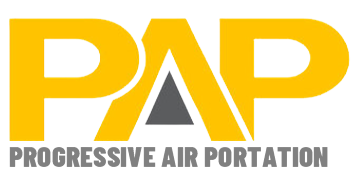Have you ever considered the efficiency and power that comes with using a command-line interface (CLI) on Linux? Whether you are a beginner or an experienced user, there are numerous advantages to utilizing the CLI on your Linux system. Not only does it provide you with greater control and flexibility over your system, but it also allows you to perform tasks quickly and efficiently. In this blog post, we will discuss the important benefits of using a command-line interface on Linux and how it can enhance your overall experience with the operating system.
Key Takeaways:
- Efficiency: Command-line interface allows for quicker execution of tasks by using keyboard commands instead of navigating through graphical user interface.
- Flexibility: Users can customize and automate tasks using scripts, and have more control over system configurations and processes.
- Resource Conservation: Command-line interface uses less system resources compared to graphical user interface, making it ideal for lower-end machines or server environments.

Benefits of using a command-line interface on Linux
You can see that there are numerous benefits to using a command-line interface on Linux. It offers greater power and flexibility, allowing you to perform complex tasks with just a few simple commands. Additionally, it can be much faster than navigating through a graphical user interface, making it ideal for experienced users or those who are comfortable with typing commands.
The command-line interface also allows for precise control and customization, giving you the ability to fine-tune your system and troubleshoot more effectively. Overall, mastering the command-line interface on Linux can significantly enhance your productivity and efficiency in managing your system.
Efficiency and Speed
Now, let’s talk about the efficiency and speed that a command-line interface (CLI) provides on Linux. When it comes to managing your system, the CLI offers a level of efficiency and speed that is unmatched by graphical user interfaces (GUI).
Faster System Management
With the CLI, you can navigate through directories, manage files, and perform system tasks with lightning speed. The ability to execute commands directly without the need to navigate multiple menus and windows saves you valuable time and allows you to accomplish tasks more efficiently. Whether you’re installing software, updating packages, or troubleshooting issues, the CLI enables you to do so with greater control and agility.
Scripting and Automation
Using the CLI on Linux, you have the power to automate repetitive tasks by scripting commands. This means that you can create scripts to perform a series of tasks automatically, saving you from having to manually execute each command. By harnessing the power of scripting and automation, you can streamline your workflow and improve the overall efficiency of system and application management on Linux.
System Control and Flexibility
Your command-line interface on Linux offers you unparalleled system control and flexibility. With the command line, you have the power to execute precise commands to manage your system, giving you granular control over every aspect of your operating system.
Access to Underlying Features
When using the command-line interface, you have direct access to the underlying features of your Linux system. This means that you can interact with the system at a level that is not possible through a graphical user interface. You have the ability to manipulate system files, access and modify system settings, and carry out advanced system administration tasks with ease.
Customization Options
One of the key benefits of using the command-line interface on Linux is the extensive customization options it offers. You have the freedom to tailor the system to your specific needs and preferences, allowing you to create a computing environment that maximizes your productivity and efficiency. Whether it’s customizing the appearance of the terminal, creating aliases for frequently used commands, or setting up automated scripts, the command line provides you with unmatched flexibility to personalize your Linux experience.
Tool Availability and Integration
To truly harness the power of a command-line interface on Linux, you need access to a rich set of tools that can seamlessly integrate with each other. This is where the command-line interface truly shines, offering you a range of options for customizing your working environment and increasing your efficiency.
Rich Set of Tools
When using a command-line interface on Linux, you have access to a rich set of tools that cater to a wide range of tasks. Whether you are working with system administration, development, or data analysis, you can find specialized tools that are tailored to your needs. This allows you to perform tasks efficiently without the need for heavy graphical user interfaces, putting you in control of your environment.
Seamless Tool Chaining
One of the key benefits of using a command-line interface on Linux is the ability to seamlessly chain tools together. This means that you can take the output of one command and use it as input for another, creating powerful sequences that automate complex tasks. This level of integration and automation is crucial for increasing your productivity and streamlining your workflow.
Remote Management and Accessibility
For system administrators, remote management and accessibility are crucial tasks that can be efficiently achieved through the command-line interface on Linux. This allows you to manage servers and systems from anywhere with an internet connection, providing flexibility and convenience.
Remote System Administration
When managing Linux servers, the ability to administer systems remotely is a valuable feature of the command-line interface. With tools such as SSH (Secure Shell) and remote desktop protocols, you can securely connect to and manage servers from anywhere. This is especially important for handling critical tasks and troubleshooting issues without the need to physically access the server. Remote system administration also enhances security by allowing you to restrict physical access to the server, reducing the risk of unauthorized tampering or data breaches.
Headless Server Management
Using the command-line interface on Linux enables you to manage headless servers, which are systems without a dedicated monitor, keyboard, or mouse. This is particularly advantageous for data centers and remote server locations where physical access is limited. By utilizing terminal-based tools and commands, you can perform maintenance, update software, and monitor performance without the need for a graphical user interface. Headless server management increases efficiency, as it eliminates the need for additional hardware and simplifies the management process.
FAQ
Q: What are the benefits of using a command-line interface on Linux?
A: The command-line interface on Linux offers several benefits, including the ability to efficiently manage files and directories, perform system tasks and automation, access and manage system resources, and troubleshoot issues with greater control and precision.
Q: How does using a command-line interface on Linux differ from a graphical user interface?
A: Using a command-line interface on Linux provides users with direct access to the operating system, allowing for more advanced and precise control over system functions and resources. It also enables users to perform tasks more efficiently, especially when managing files, automating tasks, and troubleshooting issues.
Q: What are some specific examples of tasks that can be performed more effectively with a command-line interface on Linux?
A: With a command-line interface on Linux, users can perform tasks such as managing files and directories (e.g., copying, moving, and deleting files), installing and updating software packages, managing system processes, setting up and managing network configurations, and performing system maintenance and troubleshooting tasks with greater efficiency and control.



